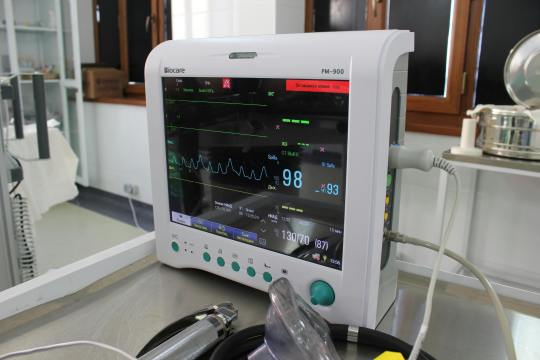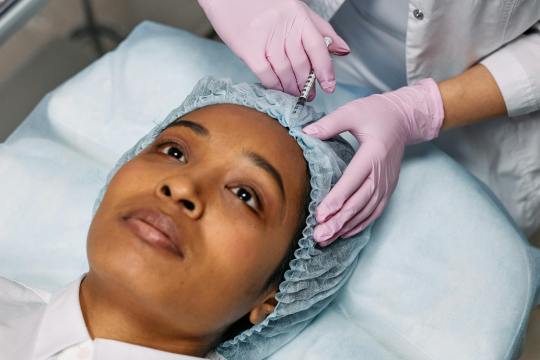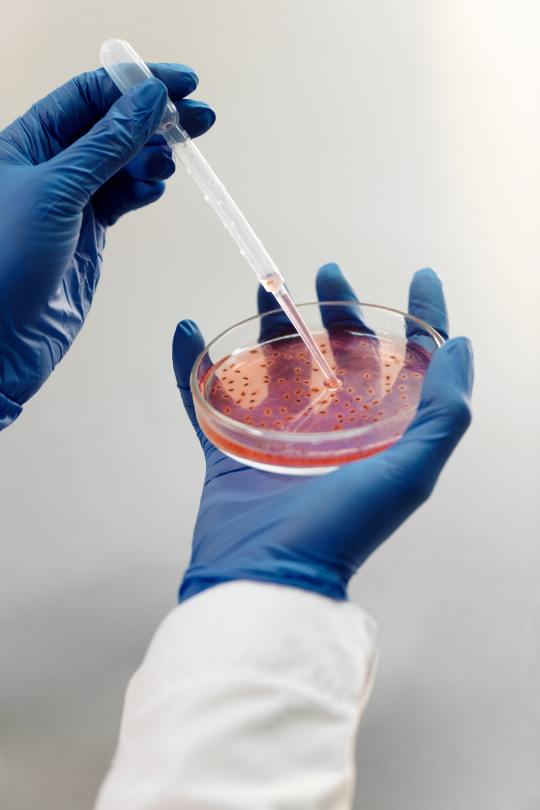#dr. robert kast
Explore tagged Tumblr posts
Text
Stem Cells Play an Important Role in the Future of Healthcare

Based in Boca Raton, Stem Cell Assurance is a company that uses stem cells for various regenerative medicines. In a September 2023 article on its website, the company explains how stem cells will play a significant role in healthcare.
Stem cells come from the human body and can duplicate into specialized cells. Medical professionals use them because they can generate other stem cells through self-renewal.
Researchers also value them for their ability to repair diseased tissues. The three main types of stem cells are embryonic, adult, and induced pluripotent stem cells. Embryonic stem cells come from embryos, and adult stem cells come from blood, bone marrow, and fat cells located in various tissues and organs in the body. Induced pluripotent stem cells represent reprogrammed adult cells, such as skin cells.
All these stem cell types have uses in regenerative medicine, treating genetic disorders, and organ transplantation. Medical professionals can also use them in stem cell therapy to prevent disease or injury. In regenerative medicine, stem cells repair damaged or diseased tissue. These cells replace or correct genetic mutations as a therapy for genetic disorders.
Researchers are now exploring using stem cells to grow human organs to address the lack of organs available through donation and for use in cosmetic and plastic surgery. Regarding cosmetic and plastic surgery, stem cells show promise in healing wounds, scar reduction, tissue reduction, hair growth, rejuvenating skin, and enhancing the breast area after mastectomy.
Finally, medical professionals may use stem cells in drug development and testing. Because of their ability to regenerate, researchers can recreate diseases in the laboratory to understand how diseases proliferate so they can develop treatments.
0 notes
Text
How Medical Technology Has Transformed the Healthcare Industry

As technology continues to impact various industries, the healthcare sector hasn’t been left behind. From the stethoscope and X-ray machines to the invention of wearable medical devices and the incorporation of artificial intelligence (AI), healthcare technology has facilitated the introduction of leading-edge treatments. Following are some of the benefits associated with recently developed medical technologies.
Integrated Medical Records
In the past medical information, from visits to medical specialists, general practitioners, dentists, and other allied health professionals was stored in separate locations in various medical clinics and facilities. Technology has paved the way for electronic medical records (EMRs), which are digital records of patient test results, medical histories, and other relevant medical information stored in a central online location. EMRs allows for remote access and sharing of patient records in order to study health information associated with each patient.
Public Health Improvement
The emergence of COVID-19 highlighted the need to create rapid response mechanisms in order to promptly address public health issues within communities. Thanks to technology that has led to the establishment of cloud-based systems, there is improved information sharing among various healthcare stakeholders. This has allowed organizations to develop policies and strategies to swiftly deal with diseases and medical emergencies that affect the public in order to create better health outcomes.
Reduction of Medical Errors
Medical errors are a major concern in the healthcare sector. According to an American Institute of Medicine (IOM) report, medical errors across US healthcare institutions are the third leading cause of death, with close to 98,000 deaths recorded each year. Technology has developed systems to reduce medical errors and save lives. The Clinical Decision Support (CDS) system allows healthcare experts to receive medical and specific-patient information at the appropriate time to boost the quality of decision making, as well as offer evidence-based standards, guidance, procedures, and protocols to achieve the best care possible.
0 notes
Text
Lab Researches Brain Repair, Age Reversal through Tissue Replacement

A presentation by Jean Hebert at the 2023 HEALinc Future Health Innovation Summit addressed “Brain Repair and Age Reversal with Tissue Replacement.” According to Hebert, a neuroscience and genetics professor at the Albert Einstein College of Medicine, cognitive functions and self-identity are encoded in the brain in ways that are flexible and exhibit plasticity. At the same time, precursor cells and tissues (such as mesenchymal stem cells) have the ability to regenerate and integrate in the adult brain. This makes replacing brain tissue when it’s damaged, and as aging progresses, a possibility.
The Hebert lab is working to reassemble precursor cell types, engineering replacement tissue that targets the neocortex. This is the area of the brain with the most advanced cognitive functions, those integral to self-identity and maintenance of long-term memory.
The lab has demonstrated the feasibility of this approach through rebuilding layered vascularized neocortical tissue in situ (on-site) within the adult mouse neocortex. Researchers first remove areas of brain tissue and scar tissue that have experienced "diffuse loss of tissue integrity,” with tissue areas rebuilt sequentially over time. This enables executive functions and memory to relocate and repopulate brain tissue. The Hebert lab is leading a multi-year project that seeks to develop human-tissue replacement prototypes, with therapeutic applications.
0 notes
Text
Stem Cell Therapy - Separating Fact from Fiction

Stem cell therapy is a medical treatment that makes use of stem cells to repair and replace damaged cells and tissues in the body. Despite its potential, stem cell therapy is often faced with misconceptions and myths. It is important to separate the facts from the fiction.
One common myth is that stem cell therapy is risky. However, this is far from the truth; stem cell therapy has proven to be safe. Extensive testing in controlled settings is always carried out before approval. Modern technology has also improved safety measures and reduced the risk of side effects.
Another misconception is that the body will reject stem cells. Unlike organ transplantation, adult stem cell therapy uses the patient's cells, making rejection impossible. This therapy has helped cure many diseases, and ongoing research continues to uncover its potential. Patients can rest assured that their bodies will not reject the stem cells used in therapy.
0 notes
Text
Differences Between Adult and Embryonic Stem Cells

Stem cells do not have a designated purpose. Instead, they act as a foundation for tissues and organs. Humans have two major types of stem cells: embryonic and adult stem cells.
Embryonic stem cells help babies develop in the womb. They form several weeks after sperm cells fertilize the ovum. Embryonic cells have this name because they only persist during the embryonic state of human development. Then, adult stem cells split off from their embryonic counterparts and persist.
While embryonic stem cells are pluripotent, meaning they can split and develop into any stem cell, adult stem cells are multipotent. They can metamorphose into related cell types and can only split into a limited number of cell types.
Further, embryonic and adult stem cells differ in their locations. Adult stem cells mostly live in the brain, blood, liver, skin, skeletal muscles, and bone marrow; embryonic cells primarily live in the blastocyst.
0 notes
Text
Trends in Alzheimer's Disease Treatment

Alzheimer's disease, a devastating neurodegenerative condition, affects millions of people worldwide. Ongoing research seeks to uncover novel therapeutic targets and innovative treatment approaches to combat this challenging disease. Therefore, as understanding of the disease evolves, so do treatment trends.
One of the most promising trends in Alzheimer's treatment is the focus on early detection and intervention. Researchers have found that Alzheimer's may develop in the brain years before symptoms appear. Therefore, doctors can identify individuals at high risk for Alzheimer's at an early stage and implement interventions to slow or even prevent disease progression.
Personalized medicine is becoming a key trend in Alzheimer's treatment. Since each individual's experience with Alzheimer's is unique, researchers use biomarkers and genetic testing to tailor treatment plans to each patient's specific needs.
Technological advances also significantly contribute to treating Alzheimer's disease. Virtual reality is utilized to create immersive environments that stimulate memory and cognition in patients. Similarly, smartphone apps and wearable devices are employed, using machine learning analysis to track cognitive function and monitor treatment effectiveness.
Furthermore, an Israeli-US collaborative project is using ultrasound technology for non-invasive treatment of Alzheimer's and brain tumors. Doctors from Sheba Medical Center in Israel and the Rockefeller Neuroscience Institute at West Virginia University lead this project. They employ ultrasound waves to open the blood-brain barrier, enabling targeted therapy delivery to the brain. This approach reduces Alzheimer's brain plaques and enhances chemotherapy effectiveness for brain tumors.
0 notes
Text
Self-Scan Ultrasound Test Wins Professional Association Competiti

The American Institute of Ultrasound in Medicine (AIUM) is a professional association for sonographers, doctors, and scientists. It sponsored a competition to award funds for developing an ultrasound scanner that pregnant women can use at home. Named after the ABC entrepreneurial TV show Shark Tank, the event gave the nod to Pulsenmore, a medical technology firm based in Israel.
Pulsenmore seeks to alleviate the difficulties patients in remote areas face in reaching ultrasound clinics and reduce care costs. The self-scanner attaches to a smartphone and uses an app to make readings and transmit imagery to doctors. The company claims it will also enable women to detect problems earlier.
AIUM’s first-ever Shark Tank competition occurred at its UltraCon gathering in March 2023 in Orlando, in conjunction with the Academy for Radiology and Biomedical Imaging Research. The event allowed contestants to home their marketing and presentation skills and receive feedback from financiers and industry experts.
Founded in 2014, Pulsenmore is developing other products, such as a transvaginal probe, a pregnancy monitoring system, and ultrasound imaging for chronic diseases.
0 notes
Text
The Role of Telomeres in Reversing the Aging Process

Dr. Robert Kast practices in Boca Raton, Florida. An experienced and board-certified obstetrician and gynecologist, Dr. Robert Kast maintains an interest in the role of telomeres in reversing the aging process.
Aging is an inescapable part of life. Scientists are exploring whether increasing telomere length can help reduce the aging process. During the DNA replication process, which sustains an organism, the chromosomes might become too short and eventually die.
Each strand of DNA has two ends. The strands can become tangled, frayed, or shortened without protection. A depletion of genetic material contributes to aging. Telomeres protect DNA by forming a cap, similar in principle to the plastic tip found on the end of shoelaces. The protection allows for proper replication during cell division.
To maintain and increase telomere length, scientists use an enzyme known as telomerase. The enzyme telomerase adds to the sequencing process. Telomerase carries its RNA ribonucleoprotein (template), which enables it to elongate telomeres.
Enhancing telomerase ensures that telomeres don’t get too short or die. Scientists suggest that reactivating the telomerase enzyme, which boosts cell replication, might reverse premature aging.
0 notes
Text
Giambalvo Fund Supports Research on Gender and Women in Medicine

A Boca Raton, Florida, physician, Dr. Robert Kast has treated patients for obstetric, gynecological, and infertility conditions since 1985. In addition to his role as a physician, Dr. Robert Kast belongs to professional organizations such as the American Medical Association (AMA), the largest national medical association.
The AMA research grant program, the Joan F. Giambalvo Fund for the Advancement of Women Award, supports scholarship related to women and gender in medicine. The AMA administers grants awards of up to $10,000 to researchers in health care who study issues faced by women
Since its inception in 2006, the foundation has awarded 34 grants, allowing researchers to study topics on flexible work options, gender differences in the way those in obstetrics and gynecology treat patients, and retention and promotion in medical education.
In 2023, Yoshiko Iwai (University of North Carolina) and Dr. Oluwadamilola M. Fayanju (University of Pennsylvania) won the year’s award for their project on the role of surgical ergonomics in gender disparities. This project explores the role of the fit of surgical instruments, ergonomics, surgical training experiences, and daily operations. The team expressed their gratitude at being given the opportunity to pursue this project with colleagues at other universities.
0 notes
Text
Gut Bacteria May Extend Health in Centenarians

Board certified in obstetrics and gynecology, Dr. Robert Kast is a Boca Raton physician who focuses on anti-aging medicine. Dr. Robert Kast has participated in events that focus on anti-aging such as the 2023 HEALinc Future Health Innovation Summit.
One of the topics presented at the conference was keystone microbes within the human microbiome (gut) and the ways they contribute to longevity. While some bacteria have a negative impact on health, others support an effectively functioning digestive tract. Unfortunately, contemporary Western diets, combined with overzealous hygiene, can lead to a relatively poor microbiome, lacking in essential probiotics and carbohydrate metabolizers.
The importance of a diverse microbiome cannot be understated. A 2021 study published in the journal Nature linked a unique microbiome to the fact that centenarians are less vulnerable to age-related chronic diseases and have a higher likelihood of surviving infectious diseases. The study looked at 160 Japanese centenarians with an average age 107 and found that, compared with much younger subjects, they had elevated levels of bacterial species to generate secondary bile acids. These molecules, produced by microbes in the colon, appear to have an effect of moderating immune responses and ensuring that harmful pathogens are kept at bay in the intestines. In turn, this encourages prime health well into people’s hundreds.
0 notes
Text
RAADcity - Annual Event Focusing on Longevity

A board-certified obstetrician and gynecologist, Dr. Robert Kast has been practicing in Boca Raton, Florida, for over four decades. He provides clinical guidance to his patients in various areas, including obstetrics and gynecology, anti-aging, infertility, and stem cell treatments. Dr. Robert Kast is also an attendee of the RAAD Fest.
RAADcity is a unique event offering exciting opportunities to engage with health experts. With a focus on enhancing long-term health and well-being, the event features a range of top global companies, clinics, and services centered around promoting longevity through breakthrough therapies. Throughout its history, RAADcity has significantly impacted the longevity community by expanding worldwide awareness and fostering collaboration among industry leaders, longevity companies, and other participants.
At RAADcity, attendees can expect a rich and educational experience. This event is part of the renowned RAADfest series, the world's largest science event. RAADcity showcases practical and cutting-edge methods to address aging, presented for various interest levels, including those new to exploring anti-aging therapies.
0 notes
Text
Senolytics - Addressing Age-Related Disease and Deteriorating Cells

Based in Boca Raton, Florida, Dr. Robert Kast delivers OB/GYN care that meets the needs of diverse community members. With a strong interest in longevity medicine, Dr. Robert Kast attended the 2023 HEALinc Future Health Innovation Summit in April 2023. One presentation at the three-day conference in the Bahamas was “Senolytics and The Future of Longevity Medicine.”
With people living much longer, on average, than they did a couple of centuries ago, a significant portion of humanity now experiences diseases of aging such as tissue deterioration. A major issue is that cellular senescence (cell deterioration with age) is an important asset in the earlier stages of life, when it helps with host immunity, wound healing, and tumor suppression.
While blocking the growth of cancerous cells at an early age, this ultimately has a negative impact on health, as the organs and tissues in the body experience an accumulation of senescent cells (SNC). These impact physiological responses to the surrounding microenvironment, with the increased burden on organs impairing the immune system. This in turn invites in some types of cancer and increases cardiovascular risks.
Targeting SNC through senolytic drugs have been demonstrated, through mice models, to extend the median lifespan and combat atherosclerosis, osteoarthritis, and neurodegeneration. Today’s mechanism-based research in senotherapeutics has delivered formulations such as quercetin and dasatinib, while a high throughput screening approach for chemical compound libraries is beginning to produce positive results.
0 notes
Text
The Use of Ultrasound to Treat Symptoms of Alzheimer's

Based in Boca Raton, Florida, Dr. Robert Kast specializes in infertility, anti-aging, obstetrics, and gynecology. With over 35 years of experience in the medical field, Dr. Robert Kast explores diverse treatment modalities, such as ultrasound therapy, to treat Alzheimer's.
Alzheimer's is a cognitive impairment that is currently incurable. However, doctors manage its symptoms using several treatment options, including drugs like memantine and cognitive stimulation therapy. A recent technological breakthrough has enabled the treatment of Alzheimer's non-invasively.
Ultrasound technology has enabled doctors to effectively overcome the blood-brain barrier, a protective shield that blocks the entry of antibodies and large molecules into the brain. By vibrating gas-filled bubbles, ultrasound waves separate the cells forming the barrier, enabling drug delivery. Once drugs reach the brain, the barrier naturally reseals, discouraging the infiltration of other foreign substances.
Clinical trials have demonstrated the efficacy of ultrasound use in reducing Alzheimer's hallmarks and progression, leading to cognitive improvements. Experts consider ultrasound technology safe for long-term use. Additionally, the success of ultrasound in treating Alzheimer's disease suggests potential for application in other brain diseases, such as aggressive tumors.
0 notes
Text
How to Earn Board Certification in Obstetrics and Gynecology

A Boca Raton, Florida-based physician, Dr. Robert Kast has practiced independently as an OB/GYN since 1985. Dr. Robert Kast holds board certification in obstetrics and gynecology.
Individuals with a doctor of medicine (MD) can begin the American Board of Obstetrics and Gynecology (ABOG) board certification process in their fourth year of postgraduate residency. No matter when MDs choose to pursue board certification through the ABOG, they must pass the written ABOG qualifying exam. They must also have amassed a collection of cases that reflect their unique care practices, and draw upon these cases while taking the ABOG oral Certifying Exam.
A panel of respected OB/GYN experts administer the final certifying exam, with a focus that is 30 percent obstetrics, 30 percent gynecology, 30 percent general women's health and office practice, and 10 percent cross content (which ranges from ethical conduct among colleagues to communicating effectively with both patients and their loved ones).
0 notes
Text
What Are Telomeres?

Dr. Robert Kast is an expert in stem cells and was the director of medical alliances for a stem cell company named Stem Cell Assurance, a clinical-grade skincare and cosmetic company. Dr. Robert Kast has written several medical reviews regarding stem cells and anti-aging.
Research has noted that telomere length, which determines the aging rate and the likelihood of age-related diseases, can be impacted by different lifestyle factors. Telomere describes the part of the repetitive DNA sequence at the chromosome's tip. Telomeres are so situated because they ensure that the ends of chromosomes remain compact and do not become frayed.
Every time a cell multiplies, telomeres shrink to a point where it dies because it cannot multiply. By impacting the cellular response to growth stimulation, telomeres usually determine the fate and age of the cell.
As a person grows older, the length of telomeres reduces. If the shortening continues, it might result in the oncogenic transformation of somatic cells and senescence. This might eventually result in a person contracting aging diseases.
0 notes
Text
What Sets Stem Cell Educator Therapy Apart

Dr. Robert Kast attended the State University of New York at Stony Brook. He is a doctor with experience in obstetrics and gynecology, anti-aging, and infertility treatment. As the former director of Stem Cell Assurance, Inc. and the founder of one of the biggest physician practices in the country, Dr. Robert Kast has established his expertise in stem cells.
Stem cells have many practical applications as they can be used to treat the skin and many other parts of the human body. Dr. Yong Zhao developed Stem Cell Educator therapy, an in vitro process in which the white blood cells of a patient are transmitted through a Stem Cell Educator apparatus coated with CB-SCs (human umbilical cord-derived multipotent stem cells).
During this circulation, the white blood cells in the patient’s body intercept communication between the CB-SCs. This triggers a reeducation of the cells and reverts them to their pre-diseased state. At the end of this process, the re-educated cells are circulated in the patient’s body without releasing the CB-SCs from the Stem Cell Educator device.
This sets Stem Cell Educator Therapy apart from other stem cell treatments. Because Educator Therapy does not introduce foreign reagents or stem cells to the patient’s body, the chances of immune acceptance are higher while the risk of rejection is lower.
0 notes